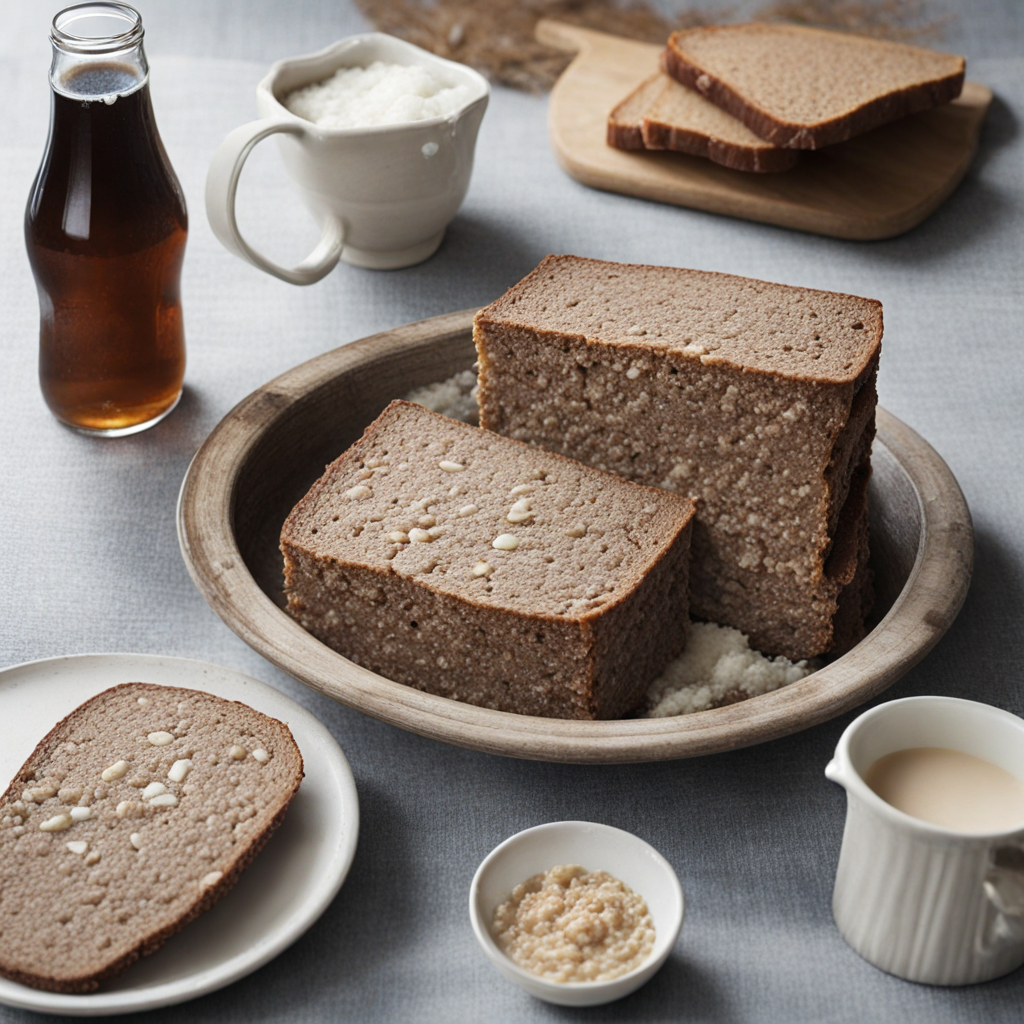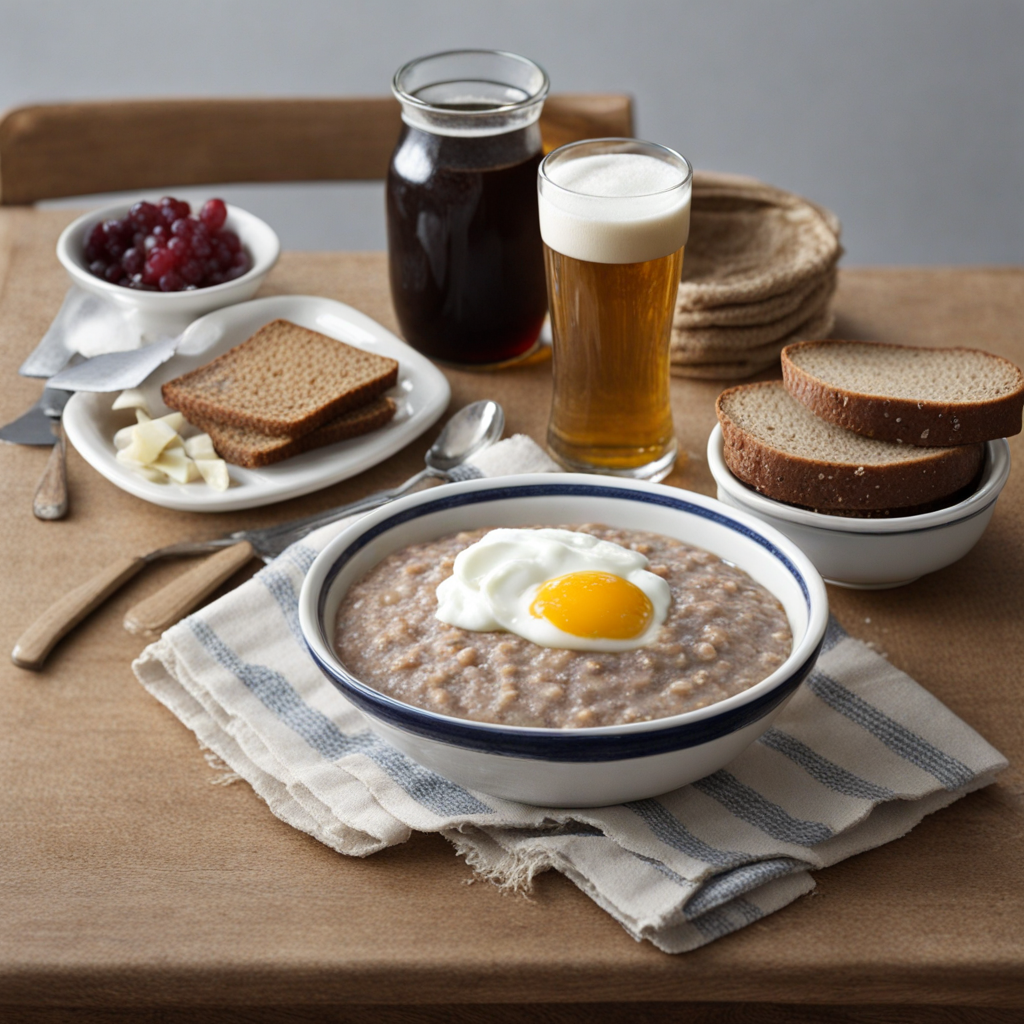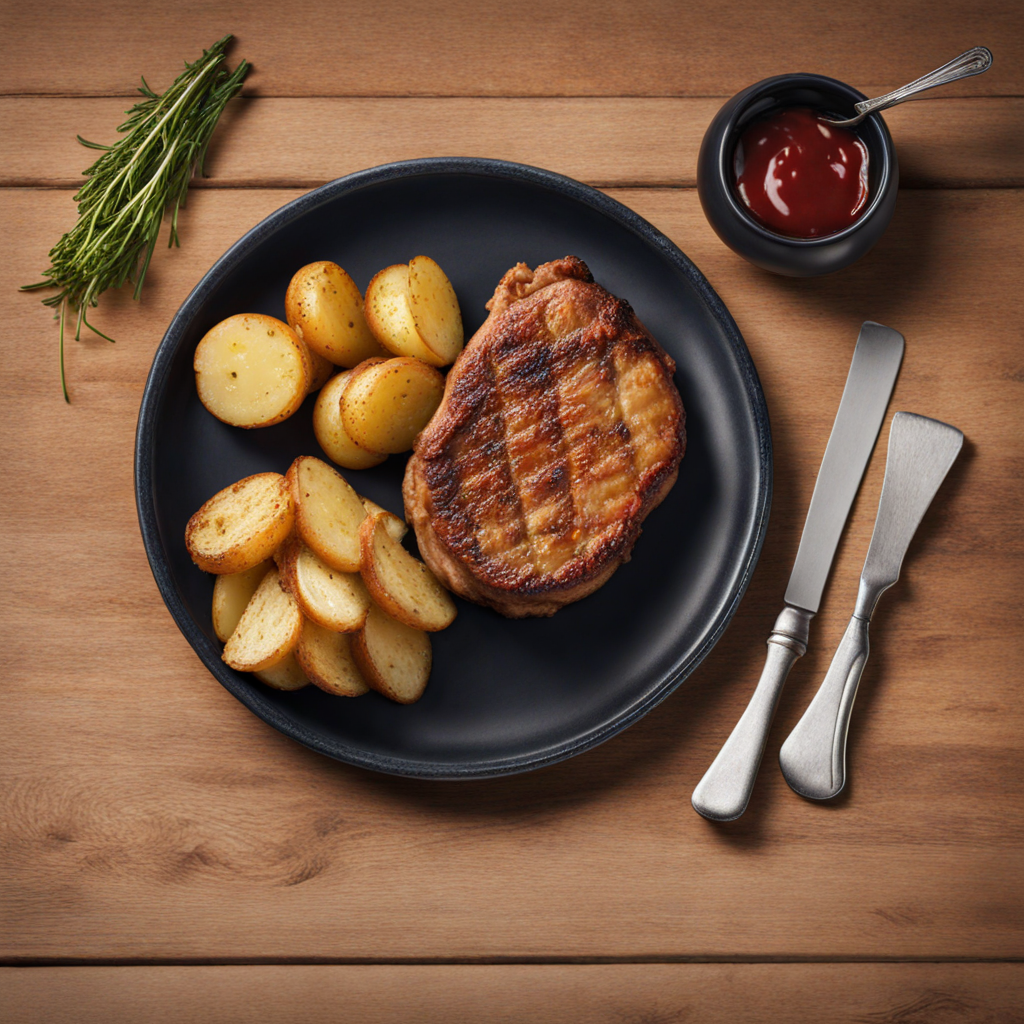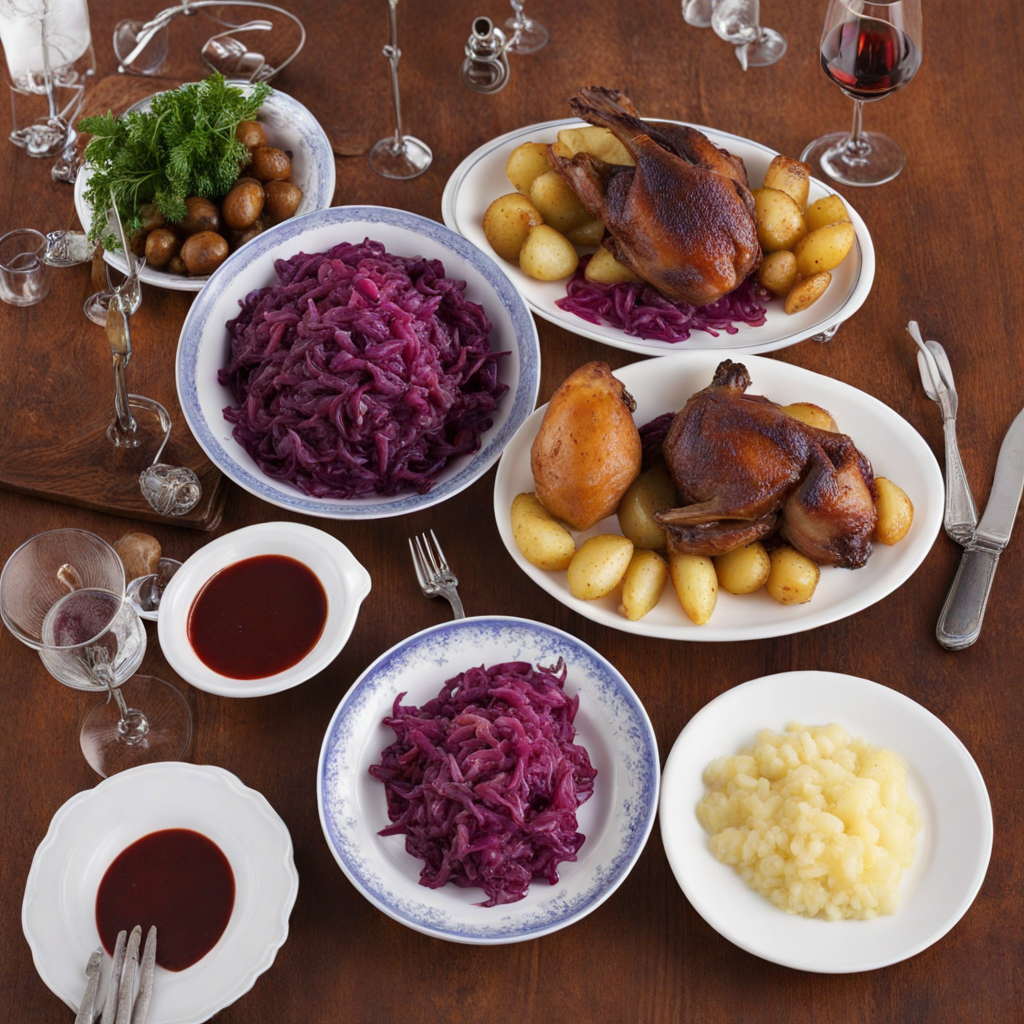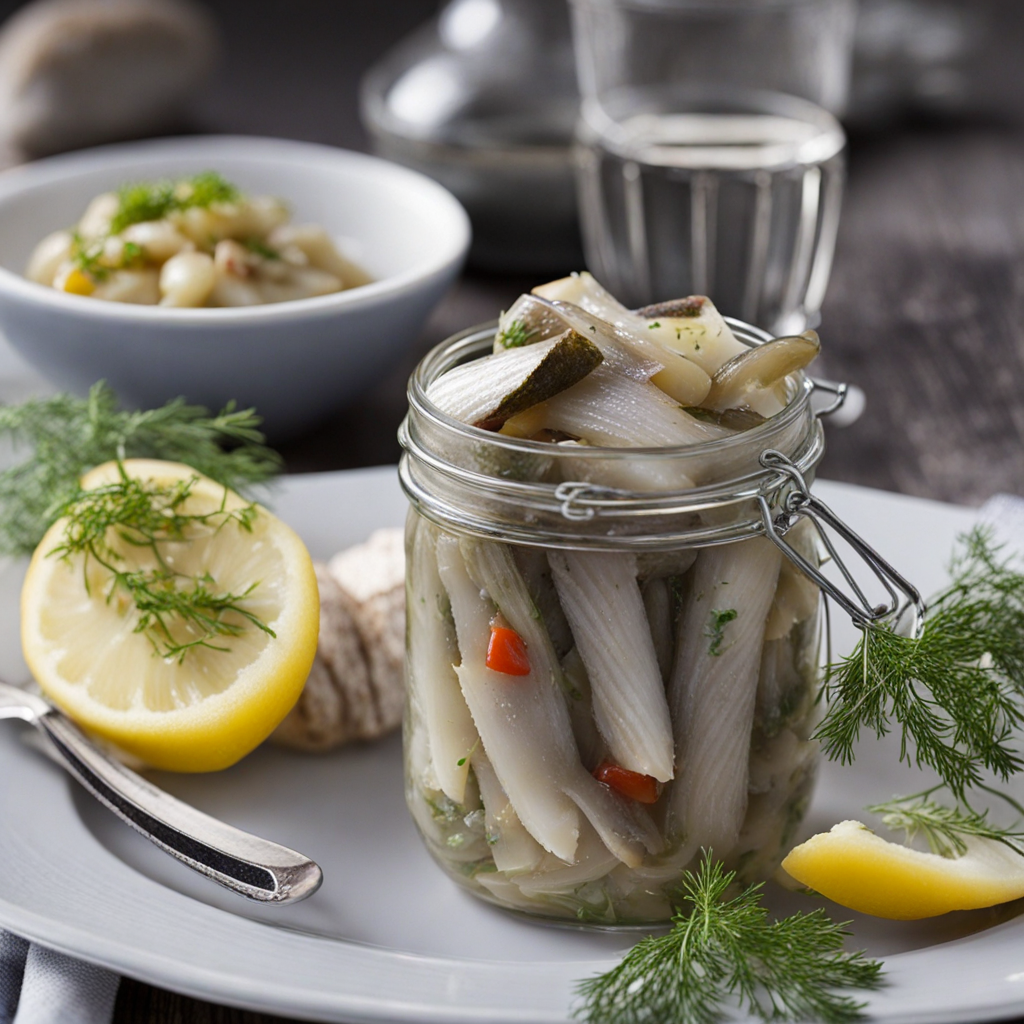Øllebrød
Øllebrød is a traditional Danish dish that embodies the rustic charm and simplicity of Scandinavian cuisine. This unique food is primarily made from leftover rye bread, which is soaked in a mixture of beer and water, allowing the flavors to meld and the bread to soften into a porridge-like consistency. The use of dark, hearty rye bread gives Øllebrød a deep, nutty flavor profile, while the beer adds a subtle sweetness and complexity, making each spoonful a delightful experience. Often served warm, it can be enjoyed as a comforting breakfast or a satisfying dessert, reflecting the Danish philosophy of utilizing every part of ingredients to minimize waste. The texture of Øllebrød is thick and creamy, with pieces of bread still visible, offering a satisfying chew. Traditionally, it is garnished with a sprinkle of sugar, a dollop of cream, or even a drizzle of syrup, which enhances its sweetness and richness. Some variations include the addition of spices like cinnamon or cardamom, lending an aromatic quality that elevates the dish further. The combination of the earthy bread and the sweetness of the toppings creates a balance that is both hearty and indulgent, making it a beloved comfort food among Danes. In Denmark, Øllebrød is not just a dish; it’s a cultural experience that connects people to their culinary heritage. It showcases the importance of resourcefulness in cooking and highlights the deep appreciation for simple, yet flavorful ingredients. Whether enjoyed at home or in a local café, Øllebrød invites those adventurous enough to explore Danish cuisine to savor its unique taste, rich history, and the warmth it brings to the table.
How It Became This Dish
Øllebrød: A Journey Through Denmark's Culinary History Øllebrød, a traditional Danish dish, is a fascinating blend of history, culture, and sustenance. This simple yet hearty meal, primarily made from rye bread, beer, and often sweetened with sugar or syrup, reflects the resourcefulness of the Danish people and their deep connection to the land and its produce. To understand Øllebrød, we must explore its origins, cultural significance, and the evolution it has undergone through the centuries. #### Origins of Øllebrød The roots of Øllebrød can be traced back to the Viking Age, a period that lasted from approximately 793 to 1066 AD. During this time, the Norse peoples were known for their advanced agricultural practices and ability to utilize local ingredients. Rye, a hardy grain well-suited to Denmark’s climate, became a staple in the Viking diet. Bread made from rye flour was common, and its durability allowed it to be preserved for long periods, making it an ideal food for seafaring and harsh winters. The use of beer in Øllebrød dates back to the same era. Beer was not merely a beverage; it was an essential part of daily life in Scandinavia. Brewed from barley or other grains, it was consumed with meals and often used in cooking to enhance flavor. The combination of beer and bread in Øllebrød likely emerged from the necessity of creating a nutritious meal from what was readily available, especially in poorer households where resources were scarce. By the Middle Ages, Øllebrød had become a popular dish among all social classes. Its preparation involved soaking stale rye bread in beer, a practice that not only prevented waste but also created a nourishing porridge-like consistency. The dish provided essential carbohydrates and calories, making it a staple for farmers and laborers who needed energy for their demanding work. #### Cultural Significance Øllebrød has played a significant role in Danish culture, embodying the concept of "hygge," which encompasses comfort, coziness, and well-being. It is often associated with family gatherings, traditional celebrations, and the simple joys of home-cooked meals. The dish's humble ingredients speak to the Danish ethos of frugality and appreciation for quality produce. In Denmark, Øllebrød is often served as a breakfast dish or a warming snack during colder months. It is typically garnished with a dollop of soft cheese or cream and sometimes accompanied by fruit preserves or honey. The combination of flavors and textures creates a comforting dish that evokes nostalgia and a sense of belonging. Moreover, Øllebrød has been immortalized in Danish literature and folklore. It is featured in various stories and poems, symbolizing the connection between the land, its people, and their culinary heritage. During times of hardship, such as during the World Wars or the Great Depression, Øllebrød served as a reminder of resilience, resourcefulness, and the importance of community and sharing. #### Development Over Time As Denmark evolved through the centuries, so too did Øllebrød. The Industrial Revolution in the 19th century brought significant changes to food production and consumption. With the rise of urbanization, traditional farming methods began to decline, leading to changes in the way food was prepared and enjoyed. However, Øllebrød maintained its place in Danish kitchens, adapting to new ingredients and tastes. In the 20th century, the dish underwent a revival as Danes began to embrace their culinary roots. The slow food movement, which emphasized the importance of traditional cooking methods and local ingredients, saw Øllebrød re-emerge as a symbol of sustainable eating. Artisanal bakers and brewers began to produce high-quality rye bread and craft beers, allowing for a more sophisticated version of the dish that celebrated its historical significance. Today, Øllebrød can be found on the menus of both traditional Danish eateries and modern restaurants that focus on Nordic cuisine. Chefs have experimented with various flavors, incorporating spices, fruits, and even gourmet beers to elevate this humble dish. While the traditional version remains beloved, the dish has adapted to contemporary tastes, showcasing Denmark’s culinary innovation while honoring its rich history. #### Contemporary Relevance In recent years, Øllebrød has gained international attention as part of the broader fascination with Nordic cuisine. The New Nordic Movement, which promotes the use of local, seasonal ingredients and traditional cooking techniques, has brought renewed interest to dishes like Øllebrød. Food enthusiasts and chefs worldwide are exploring Nordic flavors, contributing to a global appreciation for this simple yet flavorful dish. Moreover, Øllebrød is celebrated in food festivals and cultural events across Denmark. It serves as a reminder of the importance of food in fostering community and preserving traditions. As Danes become more conscious of their culinary heritage, Øllebrød stands as a testament to the strength and resilience of their food culture. #### Conclusion Øllebrød is more than just a dish; it is a symbol of Danish heritage, resourcefulness, and community. From its humble origins during the Viking Age to its place in contemporary cuisine, Øllebrød encapsulates the spirit of Denmark—a country that values tradition while embracing innovation. As food historians continue to explore and celebrate the stories behind traditional dishes, Øllebrød will undoubtedly remain a cherished part of Denmark's culinary narrative for generations to come. In a world increasingly focused on fast food and convenience, Øllebrød serves as a delicious reminder of the importance of slow, thoughtful cooking and the stories that food can tell. Whether enjoyed in a cozy kitchen or a trendy restaurant, this traditional dish continues to warm hearts and nourish souls, one bowl at a time.
You may like
Discover local flavors from Denmark


